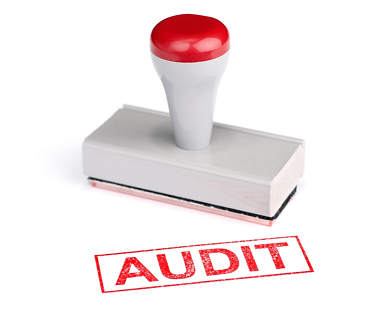An HR functional audit is an ideal way to assess and measure its success. An audit can be as formal and complex as bringing in an outside consultant, to a cross-functional project performed by a finance auditor, to a more informal voluntary audit performed within your own department.
The goal of such an audit is to examine organizational practices and compare them against legal requirements and company policies. The outcome should be a formal report to management with recommended actions for any problem areas.
Audit Scope and Areas
There are three basic types of HR function audits:
A compliance audit reviews both company policies against applicable laws, and reviews practices and processes against policies.
A continuous improvement audit looks to streamline work processes and procedures, and searches for any issues or gaps.
A service quality audit measures the satisfaction of HR customers such as employees and management.
A comprehensive audit examines all aspects of human resources’ organizational practices, such as:
 Record-keeping (employee files, I-9’s, candidate data and applications)
Record-keeping (employee files, I-9’s, candidate data and applications)- Legal compliance (AA, EEO, ADA, FMLA, etc.)
- Employee relations
- Compensation
- Performance appraisal system
- Job descriptions
- Policies and procedures
- Hiring process
- Terminations and exit process
- Handbook, Intranet and other employee communications
- Health, Security and safety (OSHA, Drug-Free Workplace)
- Benefits
Data Sources
Performing an audit requires access to many system and hardcopy records. When assigning audit responsibilities, make sure that individuals have access to the following:
- Policies
- Written procedures
- Affirmative Action plans and EEO compliance reports
- Handbooks and other employee communications
- Employee surveys
- Attendance data
- Lawsuit information
- Hire and separation statistics
- Posted notices
- Organization charts
- Salary surveys
- Workers Compensation claims
Audit Steps
To be successful, an internal audit must be well-planned with adequate resources. Here are some ideas to get started:
 Establish clear objectives up front.
Establish clear objectives up front.- Determine audit scope – for example, tackle compliance areas first and continuous improvement and service quality later.
- Identify resources for the audit including personnel, reporting relationships, timeline and budget.
- Determine roles and responsibilities and reporting process.
- Develop a detailed checklist for each audit area. A good model is list each item in the form of a question, such as “Are I-9 forms kept separately from employee files?” and “Are exit interviews performed regularly?”
Analyze Results and Implement Corrections
At the completion of the audit, analyze your data. Look for non-compliance with laws and policies, trends, process gaps and missing data and documents.
Determine the reason for any problems and recommend remedial steps. For example, if you find I-9 forms in employee files, review your new hire processes. Make sure anyone involved with new hire paperwork gets the proper training.
When presenting your findings to management, be sure to include not only the observed issues and gaps, but also remedial steps with a reasonable timeline. The results of your audit will be tighter compliance with policies and laws as well as improved processes and greater functional confidence.



 Battered employee productivity losses, such as missing work, arriving late and leaving early, being distracted, attending legal proceedings, obtaining medical care, suffering injuries or handling threatening phone calls.
Battered employee productivity losses, such as missing work, arriving late and leaving early, being distracted, attending legal proceedings, obtaining medical care, suffering injuries or handling threatening phone calls.











 Allow the use of sick days for caregiving
Allow the use of sick days for caregiving






 Share helpful resources such as
Share helpful resources such as